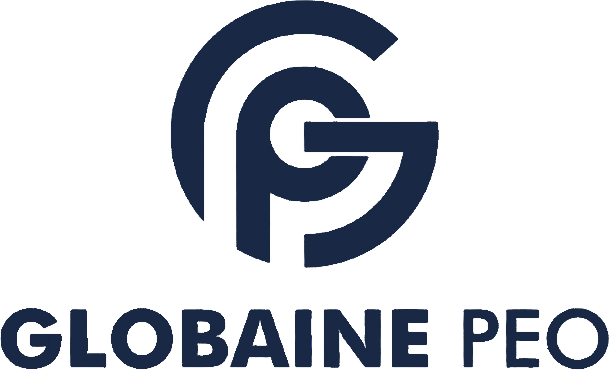When hiring in Romania, employers must navigate the country’s labor laws, especially Law No. 53/2003 (Romanian Labour Code). This law governs employment relationships and defines the types of employment contracts that companies can establish. The following key factors should be considered when hiring employees in Romania:
- The nature of the job.
- Whether the position is temporary or permanent.
- The employee’s role and responsibilities within the organization.
- Whether the company has a local entity in Romania or will use an Employer of Record (EOR) service.
The key objective for companies is to ensure that employment relationships comply with Romanian Labor Code requirements.
What Employment Contracts Are Permissible in Romania?
In Romania, there are several types of permissible employment contracts under Law No. 53/2003. These are:
- Individual Employment Contract (Permanent Contract)
- Fixed-Term Contract
- Part-Time Contract
- Temporary Agency Work Contract (through a staffing agency)
- Internship Contract
- Apprenticeship Contract
Employers may also consider Employer of Record (EOR) services to facilitate compliant hiring in Romania without establishing a local entity.
Types of Employment Contracts in Romania
1. Individual Employment Contract (Permanent Contract)
This is the most common form of employment in Romania. It establishes a permanent working relationship between the employer and the employee.
Key Features:
- Duration: Indefinite (no end date).
- Notice Periods: Required for resignation or termination, as per the Romanian Labour Code.
- Probation Periods:
- Maximum of 90 calendar days for non-executive roles.
- Maximum of 120 calendar days for executive or managerial roles.
- Disabled Persons: Maximum probation period is 30 days.
Additional Requirements:
- Written Contract: Must be signed at least one day before the start date (Article 16, Labor Code).
- Medical Check: Required before the start date.
Advantages:
- Job security for employees.
- Flexibility for employers to define long-term roles.
Risks:
- Termination of a permanent contract requires just cause or redundancy procedures.
2. Fixed-Term Contract
Fixed-term contracts are used for roles with a clearly defined start and end date.
Key Features:
- Maximum Duration: 36 months (with a possibility of extensions).
- Renewal Limits: Can be renewed up to 3 times within the 36-month limit.
- Probation Periods:
- 0 to 3 months employment: Max. 5 workdays probation period.
- 3 to 6 months employment: Max. 15 workdays probation period.
- Above 6 months employment: Max. 30 workdays probation period.
- Management positions: Max. 45 workdays probation period.
Use Cases:
- Seasonal work.
- Temporary project-based assignments.
- Employment to cover for an absent employee.
Risks:
- Employers must convert the fixed-term contract to a permanent contract if it exceeds the 36-month period.
- Termination Conditions: Termination before the expiration of the fixed-term can be costly as employees can claim payment of all wages and benefits up to the original expiry date.
- Notice Requirements: Clients must notify the employer at least 10 working days before the contract expires if it is not to be renewed. Notice to the employee must be provided at least 5 days before expiry.
3. Part-Time Contract
Part-time contracts are used for employees who work fewer hours than the standard 40-hour workweek.
Key Features:
- Working Hours: Flexible but must be under 40 hours per week.
- Probation Periods: Allowed but depend on the total duration of the contract.
- Payment: Pro-rata salary based on the number of hours worked.
Use Cases:
- Part-time roles for students or individuals with other obligations.
- Temporary assignments with fewer working hours.
Risks:
- Must ensure working hours are properly tracked and do not exceed part-time limits.
4. Temporary Agency Work Contract
In this arrangement, the employee works for a client company but is officially employed by a temporary work agency.
Key Features:
- Duration: Maximum 24 months (with extensions possible).
- Probation: Typically 5 to 15 days, depending on contract length.
- Payment: Employee’s wages are paid by the staffing agency, not the client company.
Use Cases:
- Project-based work.
- Short-term roles where fast hiring is required.
Risks:
- If misclassified, employees can claim full employment status with the client company.
Employer of Record (EOR) Services in Romania
If a foreign company lacks a local entity in Romania, it can hire employees through an Employer of Record (EOR). The EOR acts as the legal employer, while the hiring company manages the employee’s day-to-day tasks.
Key Benefits of EOR in Romania:
- Compliance: Ensures full compliance with Romanian labor laws, tax payments, and social security contributions.
- Faster Hiring: Onboard employees quickly without setting up a local entity.
- Cost-Efficient: Avoids the cost and complexity of entity formation.
How Globaine PEO Can Help:
- Drafting and managing employment contracts.
- Payroll processing and benefits administration.
- Compliance with Romanian labor laws.
Frequently Asked Questions (FAQs)
What are the main types of employment contracts in Romania?
There are six main types of contracts in Romania: permanent, fixed-term, part-time, temporary agency work, internship, and apprenticeship contracts. Each has specific conditions outlined in Law No. 53/2003.
Can foreign companies hire employees directly in Romania?
Yes, but they must establish a local entity or use an Employer of Record (EOR) to comply with Romanian labor laws.
What is a probation period in Romania?
A probation period allows the employer to evaluate an employee’s suitability. It ranges from 30 to 120 days, depending on the contract type.
What happens if I do not convert a fixed-term contract to a permanent contract?
If a fixed-term contract exceeds 36 months or is renewed more than 3 times, it is automatically converted to a permanent employment contract.
How can Globaine PEO support hiring in Romania?
Globaine PEO offers end-to-end hiring solutions in Romania, from employment contracts to payroll, tax compliance, and onboarding.

